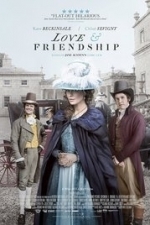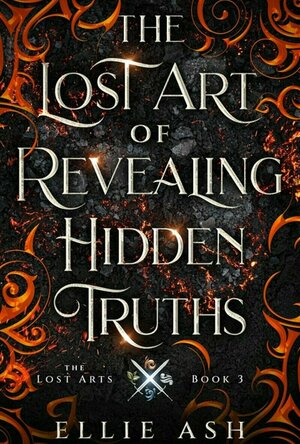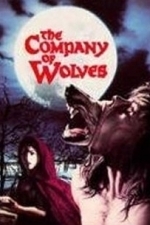Search
Search results
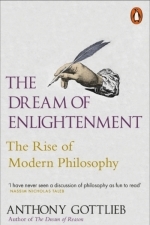
The Dream of Enlightenment: The Rise of Modern Philosophy
Book
Western philosophy is now two and a half millennia old, but much of it came in just two staccato...
Philosophy
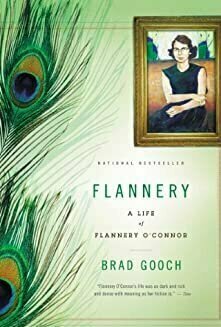
Flannery
Book
The landscape of American literature was fundamentally changed when Flannery O'Connor stepped onto...
IT
Innocent Traitor
Book
I am now a condemned traitor . . . I am to die when I have hardly begun to live. Historical...
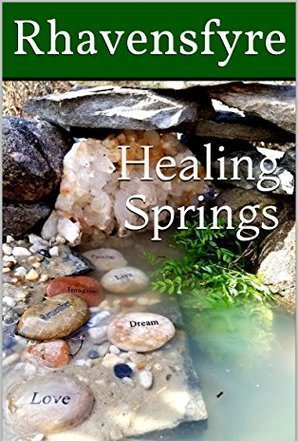
Healing Springs
Book
Falling out of love is one thing, but purposefully forgetting it is another. Selene McAlister is...
Lesbian Romance Self Discovery
Bob Mann (459 KP) rated Love And Friendship (2016) in Movies
Sep 29, 2021
Beckinsale excels in a comic tale of Girl Power in the 1790’s.
Set in 1790, Kate Beckinsale plays Lady Susan Vernon, an 18th century cuckoo-like ‘MILF’ (actually, more ‘LILF’, but using the ‘Lady’ term loosely) who with her glamourous demeanor is lusted after by both younger beaus as well as married aristocracy: an example being Lord Manwaring (Lochlann O’Mearáin).
Playing many different ends against the middle, Lady Susan – with the collusion of her American friend Alicia (Chloë Sevigny) – attempts to both find a suitably rich suitor for her daughter Frederica (Morfydd Clark) as well as finding a rich husband for herself to allow her to stay in the manor (sic) to which she has become accustomed. A tale of deception, pregnancy and a marriage of convenience follows: does Lady Susan have to choose between her sexual desires and the rich, stupid and dull Sir James Martin (Tom Bennett, “David Brent: Life on the Road”). Or can she have her cake and eat it?
Based on a Jane Austen short story, “Lady Susan”, this is a delight from beginning to end. However, it does require the attention of the viewer: characters get introduced to you in rapid fire succession, and keeping track of who’s who and how they interrelate is quite a challenge.
But this is a tour de force for Kate “Underworld” Beckinsale who delivers a depth of acting ability that I’ve not seen from her in the past. Her comic timing is just sublime, and while comedies are often overlooked in Awards season, this is a role for which she richly deserves both BAFTA and Oscar recognition.
Stephen Fry joins what is a superb ensemble cast. But outstanding among them is Tom Bennett who is simply hilarious as the nice but dim Sir James. The comic routine about his misunderstanding of “Churchill” (Church – Hill) – a running gag – is sublime and a challenger (with “Was that it t’were so simple”) for the comedy routine of the year.
Directed by Whit Stilman (“The Last Days of Disco”) from his own screenplay, this is one for the more sophisticated viewer: requiring of your full attention, but a treat for the eyes, ears and brain.
Playing many different ends against the middle, Lady Susan – with the collusion of her American friend Alicia (Chloë Sevigny) – attempts to both find a suitably rich suitor for her daughter Frederica (Morfydd Clark) as well as finding a rich husband for herself to allow her to stay in the manor (sic) to which she has become accustomed. A tale of deception, pregnancy and a marriage of convenience follows: does Lady Susan have to choose between her sexual desires and the rich, stupid and dull Sir James Martin (Tom Bennett, “David Brent: Life on the Road”). Or can she have her cake and eat it?
Based on a Jane Austen short story, “Lady Susan”, this is a delight from beginning to end. However, it does require the attention of the viewer: characters get introduced to you in rapid fire succession, and keeping track of who’s who and how they interrelate is quite a challenge.
But this is a tour de force for Kate “Underworld” Beckinsale who delivers a depth of acting ability that I’ve not seen from her in the past. Her comic timing is just sublime, and while comedies are often overlooked in Awards season, this is a role for which she richly deserves both BAFTA and Oscar recognition.
Stephen Fry joins what is a superb ensemble cast. But outstanding among them is Tom Bennett who is simply hilarious as the nice but dim Sir James. The comic routine about his misunderstanding of “Churchill” (Church – Hill) – a running gag – is sublime and a challenger (with “Was that it t’were so simple”) for the comedy routine of the year.
Directed by Whit Stilman (“The Last Days of Disco”) from his own screenplay, this is one for the more sophisticated viewer: requiring of your full attention, but a treat for the eyes, ears and brain.
Debbiereadsbook (1608 KP) rated An Unrivaled Off Season (Hockey Ever After #3.5) in Books
Apr 8, 2024
perfect for these two!
Independent reviewer for Archaeolibrarian, I was gifted my copy of this book.
This is book 3.5 in the Hockey Ever After series, and you MUST read book 3, Unrivaled, before you read this one. This is a continuation of Max and Grady's story. The other books are not necessary though, but they are all 4 and 5 star reads.
What this is, is an immediate pick up from Unrivaled and the summer that Max and Grady spent at Max's home in New Bruinswick. (I have no clue where that is, in relation to Florida or California, but I know its north and colder that those two places!)
Both men are wanting to ask THE QUESTION, but neither man can figure out how best to do it and what follows is a wonderful 100 odd pages of them getting up the courage and spitting the darn question out. But things keep happening and the question comes, finally, at the most perfect time!
These guys love each other, and they make no bones about it! I loved that the smexy times is again fade to grey, maybe even to black, but hey! I don't care! Yes I usually like the smexier times, but I'm big enough and ugly enough to admit that it's not always necessary and these guys do fade to grey perfectly!
I loved the way these two integrated into each others lives, homes, and hearts. They are quite devious in gettting what they want, and I loved that neither one really realsied what the other was doing!
It's got laugh out loud moments (or in my case, a croak cos I have a raging sore throat!) It's got so much love. It's got guys from book 1, Gabe and Dante, playing a huge part. It's got some emotional bits, mostly when Max and Grady are having the internal conversations with themselves about asking the question, but it's not heavy. It's a lighthearted read and it was the perfect way to spend a lazy Sunday morning.
I don't ususally give such short reads 5 stars, since I almost ALWAY want more, but this one??
5 full and shiny stars!
*same worded review will appear elsewhere
This is book 3.5 in the Hockey Ever After series, and you MUST read book 3, Unrivaled, before you read this one. This is a continuation of Max and Grady's story. The other books are not necessary though, but they are all 4 and 5 star reads.
What this is, is an immediate pick up from Unrivaled and the summer that Max and Grady spent at Max's home in New Bruinswick. (I have no clue where that is, in relation to Florida or California, but I know its north and colder that those two places!)
Both men are wanting to ask THE QUESTION, but neither man can figure out how best to do it and what follows is a wonderful 100 odd pages of them getting up the courage and spitting the darn question out. But things keep happening and the question comes, finally, at the most perfect time!
These guys love each other, and they make no bones about it! I loved that the smexy times is again fade to grey, maybe even to black, but hey! I don't care! Yes I usually like the smexier times, but I'm big enough and ugly enough to admit that it's not always necessary and these guys do fade to grey perfectly!
I loved the way these two integrated into each others lives, homes, and hearts. They are quite devious in gettting what they want, and I loved that neither one really realsied what the other was doing!
It's got laugh out loud moments (or in my case, a croak cos I have a raging sore throat!) It's got so much love. It's got guys from book 1, Gabe and Dante, playing a huge part. It's got some emotional bits, mostly when Max and Grady are having the internal conversations with themselves about asking the question, but it's not heavy. It's a lighthearted read and it was the perfect way to spend a lazy Sunday morning.
I don't ususally give such short reads 5 stars, since I almost ALWAY want more, but this one??
5 full and shiny stars!
*same worded review will appear elsewhere
Merissa (13583 KP) rated The Lost Art of Revealing Hidden Truths (The Lost Arts #3) in Books
Sep 26, 2025
THE LOST ART OF REVEALING HIDDEN TRUTHS is the third book in The Lost Arts series that follows Brannal and Perian. You really need to read the prior books in this series for it to make sense. I have loved the other books and couldn't wait for the Grand Finale!
This instalment begins with them arriving back at the castle following their short break. It doesn't take long for them to get back into the swing of things, although a normal hourly separation feels hard to begin with. It starts off all nice and cosy, before it kicks up a gear, and then, near the end, all hell breaks loose. Did my heart break? Oh, absolutely, on more than one occasion, and for more than one reason, too.
I was still having kittens and cursing the author with my every breath as I got closer and closer to the end. How could she wrap everything up? Surely it wasn't going to left as it was? I was literally begging Perian to read that frigging book, needing him to reach the conclusion I came to in the last book. I may or may not have screamed when I read the final paragraph!
BUT
I then turned over the page to find out there's a fourth book in this series, and it isn't a trilogy as I had mistakenly thought! I honestly can't describe the relief I felt!!! I know it's going to be from other people's perspectives, but I really hope Perian and Brannal get their story all wrapped up with a pretty bow.
The pacing was absolutely perfect for me, and I loved how things slotted into place. Deeply emotional, with plenty of highs and lows, this was such a fantastic read. I can't recommend this book highly enough, but please start at the beginning so you get the full benefit. I can't wait for the next!!!
** Same worded review will appear elsewhere. **
* A copy of this book was provided to me with no requirements for a review. I voluntarily read this book; the comments here are my honest opinion. *
Merissa
Archaeolibrarian - I Dig Good Books!
Sep 26, 2025
This instalment begins with them arriving back at the castle following their short break. It doesn't take long for them to get back into the swing of things, although a normal hourly separation feels hard to begin with. It starts off all nice and cosy, before it kicks up a gear, and then, near the end, all hell breaks loose. Did my heart break? Oh, absolutely, on more than one occasion, and for more than one reason, too.
I was still having kittens and cursing the author with my every breath as I got closer and closer to the end. How could she wrap everything up? Surely it wasn't going to left as it was? I was literally begging Perian to read that frigging book, needing him to reach the conclusion I came to in the last book. I may or may not have screamed when I read the final paragraph!
BUT
I then turned over the page to find out there's a fourth book in this series, and it isn't a trilogy as I had mistakenly thought! I honestly can't describe the relief I felt!!! I know it's going to be from other people's perspectives, but I really hope Perian and Brannal get their story all wrapped up with a pretty bow.
The pacing was absolutely perfect for me, and I loved how things slotted into place. Deeply emotional, with plenty of highs and lows, this was such a fantastic read. I can't recommend this book highly enough, but please start at the beginning so you get the full benefit. I can't wait for the next!!!
** Same worded review will appear elsewhere. **
* A copy of this book was provided to me with no requirements for a review. I voluntarily read this book; the comments here are my honest opinion. *
Merissa
Archaeolibrarian - I Dig Good Books!
Sep 26, 2025
Connor Sheffield (293 KP) rated The Company of Wolves (1984) in Movies
Apr 19, 2017
Very Different from most films (3 more)
Transformation Sequences
Great Cast
Brilliant lore
May seem confusing (1 more)
Rosaleen younger than originally planned
Of Wolves and Men
Where do I begin when reviewing a film as obscure and brilliant as, The Company of Wolves. Well for starters I should probably introduce it as it's not a film a lot of people are aware of.
The Company of Wolves is a British Gothic Horror movie adapted from an Anthology of short stories called The Curious Room, written by Angela Carter, and the short story that the film was adapted from was in fact of the same name, The Company of Wolves.
Angela Carter worked with Neil Jordan to write the screenplay and whilst it has some differences (I've not yet read the original story so I couldn't tell you the differences....just google it) the movie is still pretty close to the source material from what I have heard.
One thing I can tell you about this film is that it is brilliant and unlike anything you will ever watch (at least its unlike anything I have seen as of writing this). When I first watched this film, my initial thought was "What on earth did I just watch?" and after viewing it several more times I understood more and more and each viewing was like a new experience.
It's cast add to the creepy dark tone of the film whilst still feeling like a light fantasy film, but with gore and death. The soundtrack is certainly the creepiest element of the film, and it creates an eerily uncomfortable atmosphere. To add to this atmosphere we have a cast that includes the likes of famous names such as Angela Lansbury (Bedknobs and Broomsticks, Beauty and the Beast, Murder She Wrote etc.), Stephen Rea (V for Vendetta, The Crying Game, Underworld: Awakening etc.), David Warner (Titanic, Tron, The Omen etc.) and Brian Glover (An American Werewolf in London, Alien 3, KES etc.) just to name a few, but we also have brilliant talent from lesser known actors\actresses such as Micha Bergese (Interview With A Vampire) and the lead role of young Rosaleen, portrayed by Sarah Patterson who only ever starred in 3 more films after The Company of Wolves.
So why do I love this movie? I have a love for werewolf lore and the subtle messages about reality the legends may be formed from and this film explores some of that. With Angela Lansbury as Granny telling young Rosaleen stories about how she shouldn't trust men who's eyebrows meet, and how she shouldn't stray from the path when walking through the forest. Tradition superstition that were actual beliefs many years ago. The Company of Wolves is a combination of stories, but with an overall plot similar in many ways to that of Little Red Riding Hood, including Granny knitting Rosaleen a red shoal, and being challenged by a huntsman to a race to Granny's house, which concludes with SPOILERS!!!!
Granny is murdered, and the huntsman is discovered by Rosaleen who them puts the pieces of the puzzle together and comes to the truthful conclusion that the huntsman is in fact a werewolf.
However, my only issue with the film is not being able to explore the story properly, as the casting of Rosaleen was actually too young for the original script. The film is a somewhat coming of age movie for Rosaleen and a young boy who is infatuated with her (known only in the credits as Amerous Boy, portrayed by Shane Johnstone. Never heard of him? That's because this was his only movie). The original script was essentially going to explore more of the sexuality between a young girl and the handsome stranger known as The Huntsman. However, during casting, Sarah Patterson shined above the other young performers and was chosen for the role, but due to her being so young (only 12/13 years old) they had to change the script and so their interaction was reduced to nothing more than a bet which would lead to a kiss, but the kiss is then a simple peck on the lips as the Rosaleen jumps back with the line "My what big teeth you have!".
Here's a tip when you watch this movie. Look around Rosaleens room at the beginning and pay attention to her dolls etc. Some of the props will help the film make more sense because one thing I should have mentioned at the start is that this story takes place in a young girls dream (Also portrayed by Sarah Patterson) and the finale is spectacular.
The wolves for the majority of their appearances are easily noticeable as being nothing more than domestic German Shepherds, but that makes sense when you think about this being a girl's dream, and this girl in fact owns a pet German Shepherd.
The best part and the most horrific part of this movie, is the transformations of two of the characters. Stephen Rea's character is a young groom in one of Granny's stories that she tells to Rosaleen, and his transformation into wolf form is one of the most graphic transformations I have ever seen in a film, and despite the use of an animatronic dog, which in part takes away some of the magic, you have to remember this was 1984 and these kinds of films were not going to have the amazing technology we have today and you have to give so much credit and respect to Neil Jordan for using practical effects.
The Huntsmans transformation is less gory but definitely not any less creepier, as we see an extended tongue, and a lot of physical body transformation before a wolf snout comes bursting out of his mouth and fur rips through his skin. Both of these portrayals of the transformation were a representation of the running theme that men have beasts inside of them, that only appear when they are angry or upset.
I highly recommend this film, but I have warned you beforehand. If you do watch this film, feel free to discuss it with me because as I said it is one of my favourites and is lesser known to many audiences.
The Company of Wolves is a British Gothic Horror movie adapted from an Anthology of short stories called The Curious Room, written by Angela Carter, and the short story that the film was adapted from was in fact of the same name, The Company of Wolves.
Angela Carter worked with Neil Jordan to write the screenplay and whilst it has some differences (I've not yet read the original story so I couldn't tell you the differences....just google it) the movie is still pretty close to the source material from what I have heard.
One thing I can tell you about this film is that it is brilliant and unlike anything you will ever watch (at least its unlike anything I have seen as of writing this). When I first watched this film, my initial thought was "What on earth did I just watch?" and after viewing it several more times I understood more and more and each viewing was like a new experience.
It's cast add to the creepy dark tone of the film whilst still feeling like a light fantasy film, but with gore and death. The soundtrack is certainly the creepiest element of the film, and it creates an eerily uncomfortable atmosphere. To add to this atmosphere we have a cast that includes the likes of famous names such as Angela Lansbury (Bedknobs and Broomsticks, Beauty and the Beast, Murder She Wrote etc.), Stephen Rea (V for Vendetta, The Crying Game, Underworld: Awakening etc.), David Warner (Titanic, Tron, The Omen etc.) and Brian Glover (An American Werewolf in London, Alien 3, KES etc.) just to name a few, but we also have brilliant talent from lesser known actors\actresses such as Micha Bergese (Interview With A Vampire) and the lead role of young Rosaleen, portrayed by Sarah Patterson who only ever starred in 3 more films after The Company of Wolves.
So why do I love this movie? I have a love for werewolf lore and the subtle messages about reality the legends may be formed from and this film explores some of that. With Angela Lansbury as Granny telling young Rosaleen stories about how she shouldn't trust men who's eyebrows meet, and how she shouldn't stray from the path when walking through the forest. Tradition superstition that were actual beliefs many years ago. The Company of Wolves is a combination of stories, but with an overall plot similar in many ways to that of Little Red Riding Hood, including Granny knitting Rosaleen a red shoal, and being challenged by a huntsman to a race to Granny's house, which concludes with SPOILERS!!!!
Granny is murdered, and the huntsman is discovered by Rosaleen who them puts the pieces of the puzzle together and comes to the truthful conclusion that the huntsman is in fact a werewolf.
However, my only issue with the film is not being able to explore the story properly, as the casting of Rosaleen was actually too young for the original script. The film is a somewhat coming of age movie for Rosaleen and a young boy who is infatuated with her (known only in the credits as Amerous Boy, portrayed by Shane Johnstone. Never heard of him? That's because this was his only movie). The original script was essentially going to explore more of the sexuality between a young girl and the handsome stranger known as The Huntsman. However, during casting, Sarah Patterson shined above the other young performers and was chosen for the role, but due to her being so young (only 12/13 years old) they had to change the script and so their interaction was reduced to nothing more than a bet which would lead to a kiss, but the kiss is then a simple peck on the lips as the Rosaleen jumps back with the line "My what big teeth you have!".
Here's a tip when you watch this movie. Look around Rosaleens room at the beginning and pay attention to her dolls etc. Some of the props will help the film make more sense because one thing I should have mentioned at the start is that this story takes place in a young girls dream (Also portrayed by Sarah Patterson) and the finale is spectacular.
The wolves for the majority of their appearances are easily noticeable as being nothing more than domestic German Shepherds, but that makes sense when you think about this being a girl's dream, and this girl in fact owns a pet German Shepherd.
The best part and the most horrific part of this movie, is the transformations of two of the characters. Stephen Rea's character is a young groom in one of Granny's stories that she tells to Rosaleen, and his transformation into wolf form is one of the most graphic transformations I have ever seen in a film, and despite the use of an animatronic dog, which in part takes away some of the magic, you have to remember this was 1984 and these kinds of films were not going to have the amazing technology we have today and you have to give so much credit and respect to Neil Jordan for using practical effects.
The Huntsmans transformation is less gory but definitely not any less creepier, as we see an extended tongue, and a lot of physical body transformation before a wolf snout comes bursting out of his mouth and fur rips through his skin. Both of these portrayals of the transformation were a representation of the running theme that men have beasts inside of them, that only appear when they are angry or upset.
I highly recommend this film, but I have warned you beforehand. If you do watch this film, feel free to discuss it with me because as I said it is one of my favourites and is lesser known to many audiences.
RəX Regent (349 KP) rated Ben-Hur (2016) in Movies
Feb 20, 2019
Who thought it was a good idea to remake Ben-Hur? Well, on paper, it would seem to be a possibility. Ben-Hur has been hitting our cinema screens since 1907, with three other theatrical versions before this one; a short silent effort in 1907, the 1925 silent epic and the blockbusting MGM epic from 1959.
But this follows stage plays, TV movies and even animated movies, all based on General Lee Wallace's 1880 novel of the same name. But if a comparison is to be made, let us focus on the 1959 Charlton Heston movie. That, which ran for over three and half hours, takes its time to establish characters and situations, then takes us on a journey across the Roman Empire as we follow the turmoil of Judah Ben-Hur, betrayed by his best friend, a Roman who he considered to be a brother.
This journey takes place and parallels the life and ultimate execution of Jesus Christ and with this parallel, Judah is gradually inspired to temper his vengeance against his friend turned enemy and after the famous chariot race and the hollow victory therein, he will witness the crucifixion and through several machinations, find solace in the fledgling Christian movement.
So, how does this version hold up? To the 1959 version; not very well. This two-hour action movie is centred around the chariot race from start to finish, something which happens in the second act of the 1959 version but this is NOT the conclusion, but a catalyst for the finale.
Here, even though the events play out in a similar fashion, they are rushed and none of the character moments are earned. It is as if the film was pitched soley on the concept of showing an action packed chariot race in the 21st century.
If you want to see a modern interpretation of this race, possibly cinema's greatest such sequence, then look at Star Wars: Episode I's Podrace which captures the spirit perfectly. The positioning of this race and its significance to the plot was the same in the 1925 version as well, yet the fifteen minute 1907 short pretty much cherry picked the same plot elements as this 2016 version, which is quite telling really.
There was little interest in the story, just a cynical desire to bring this iconic movie back to the big screen and milk it as they would any franchise. But Ben-Hur is a poisoned chalice, so iconic that it would have to have offered something new without losing the original feel to succeed, as this classic simply did not warrant a remake.
But if you are going to remake it, give it a mega budget, which they did not, an all star cast, again, not the case and bring on board a top director to lead this project.
Instead we have a cast of relative unknowns, with Morgan Freeman being the most notable cast member, the director of such movies as Wanted (2007) and a small budget of just $100,000,000, when a blockbuster these days is usually pushing $200,000,000.
The main selling point for the previous two Ben-Hurs was the scale. These were epics and pushed the technology, filmmaking styles and never shied away from the strong religious overtones. Here it looks like it is given little more than lip service hoping to pander to the religious right.
It failed. Darren Aronofsky's Noah (2013) made more of an impact and it divided audiences, but at least it was faithful to itself, pushed boundaries and left its mark on cinema.
But by the end, my jaw was literally on the floor as the maimed Massalia reconciled with Judah and the pair ride off into the sunset together, all forgiven....
WHAT!!!
And more importantly, what was the point? Jesus sacrified himself, (in the story) so that people like Judah would put down their swords and learn to forgive, yet in the end, Judah and Massalia sacrifice nothing as they both regain their friendship and live happily ever after. In the previous versions, Ben-Hur beat Massalia but he has the last laugh as his mother and sister have been left with leprosy, that is until Jesus' death sparks a miracle which cures them. This was his reward for seeing the error of his ways, not getting his family and his friend back.
In the end, this is not a bad action romp, very watchable and is an entertaining spectacle but ultimately forgettable. It will entertain for two hours but leaves you with nothing to think about, unlike the books, plays and films which have preceded this.
A real shame...
But this follows stage plays, TV movies and even animated movies, all based on General Lee Wallace's 1880 novel of the same name. But if a comparison is to be made, let us focus on the 1959 Charlton Heston movie. That, which ran for over three and half hours, takes its time to establish characters and situations, then takes us on a journey across the Roman Empire as we follow the turmoil of Judah Ben-Hur, betrayed by his best friend, a Roman who he considered to be a brother.
This journey takes place and parallels the life and ultimate execution of Jesus Christ and with this parallel, Judah is gradually inspired to temper his vengeance against his friend turned enemy and after the famous chariot race and the hollow victory therein, he will witness the crucifixion and through several machinations, find solace in the fledgling Christian movement.
So, how does this version hold up? To the 1959 version; not very well. This two-hour action movie is centred around the chariot race from start to finish, something which happens in the second act of the 1959 version but this is NOT the conclusion, but a catalyst for the finale.
Here, even though the events play out in a similar fashion, they are rushed and none of the character moments are earned. It is as if the film was pitched soley on the concept of showing an action packed chariot race in the 21st century.
If you want to see a modern interpretation of this race, possibly cinema's greatest such sequence, then look at Star Wars: Episode I's Podrace which captures the spirit perfectly. The positioning of this race and its significance to the plot was the same in the 1925 version as well, yet the fifteen minute 1907 short pretty much cherry picked the same plot elements as this 2016 version, which is quite telling really.
There was little interest in the story, just a cynical desire to bring this iconic movie back to the big screen and milk it as they would any franchise. But Ben-Hur is a poisoned chalice, so iconic that it would have to have offered something new without losing the original feel to succeed, as this classic simply did not warrant a remake.
But if you are going to remake it, give it a mega budget, which they did not, an all star cast, again, not the case and bring on board a top director to lead this project.
Instead we have a cast of relative unknowns, with Morgan Freeman being the most notable cast member, the director of such movies as Wanted (2007) and a small budget of just $100,000,000, when a blockbuster these days is usually pushing $200,000,000.
The main selling point for the previous two Ben-Hurs was the scale. These were epics and pushed the technology, filmmaking styles and never shied away from the strong religious overtones. Here it looks like it is given little more than lip service hoping to pander to the religious right.
It failed. Darren Aronofsky's Noah (2013) made more of an impact and it divided audiences, but at least it was faithful to itself, pushed boundaries and left its mark on cinema.
But by the end, my jaw was literally on the floor as the maimed Massalia reconciled with Judah and the pair ride off into the sunset together, all forgiven....
WHAT!!!
And more importantly, what was the point? Jesus sacrified himself, (in the story) so that people like Judah would put down their swords and learn to forgive, yet in the end, Judah and Massalia sacrifice nothing as they both regain their friendship and live happily ever after. In the previous versions, Ben-Hur beat Massalia but he has the last laugh as his mother and sister have been left with leprosy, that is until Jesus' death sparks a miracle which cures them. This was his reward for seeing the error of his ways, not getting his family and his friend back.
In the end, this is not a bad action romp, very watchable and is an entertaining spectacle but ultimately forgettable. It will entertain for two hours but leaves you with nothing to think about, unlike the books, plays and films which have preceded this.
A real shame...
BookblogbyCari (345 KP) rated A Short History of the World in Books
Aug 5, 2018
Best known for his classic fiction, HG Wells also wrote a non-fiction book summarising the history of the world, going from the history of the solar system, right up to the date the book was published in 1922.
As I hoped, the book often reads like a novel, with 67 distinct sections, each like a mini story. In order to fit the history of the whole world into one book, by nature the story telling ranges from nice and rapid, to a little too rapid. I found it rather like a catalogue of numerous interesting little nuggets of information. Despite covering events from all over the world, the topics often flow seamlessly from one topic to the next. Due to so many overlapping topics, this history of the world isn't told in a linear purely chronological pattern, but has to go backwards a little, now and again.
At various times throughout, the stories are gripping and Wells successfully brings history to life. I particularly liked the various sections on religious leaders. Appropriately, Wells tackles religion as would any unbiased historian-become storyteller. I also enjoyed the beginning, where Wells paints a crystal clear picture of our solar system and the vast empty space that our dramas are within. His description of our galaxy sounds nothing short of beautiful.
The book was meant to be predominantly factual, but Wells did include a substantial amount of speculation and opinion. This does not distract from the storyline, but adds value in generating the concepts of the time periods.
It covers progress and prosperity as much as carnage and decimation, and provides good explanations of everything it covers. (Although it would benefit from more illustrations). At times it feels detail heavy but also gives the reader a feel for each age - the book is not limited to which country went to war with which country and when, but also examines changes in ways of thinking through the ages. Including the Ancient Greek philosophers, Arabian progress in maths and science, the advent of experimental science, and the development of political and social ideas in Wells’ time.
I was reassured to learn that despite not studying the history of the world in its entirety in school, I was already familiar with much of the book’s content. Having said that, there were also topics where I really felt I was learning something. I read Wells’ opinion on why the Roman Empire fell, and how the industrial revolution was not merely a revolution in machinery, but rather a revolution in how people conducted their everyday lives. There were also some important figures from history described that were never mentioned in my school days, particularly Charlemagne and Roger Bacon.
Towards the end of the book, Wells correctly predicts another war like that of the Great War. However his final message was one of faith and hope in humanity’s progress.
With such a huge scope, Wells must have struggled with deciding what topics to include and what to exclude. I thought he ought to have included a touch more detail on Ancient Egypt, and on the causes of the Great War (World War 1). As a British person myself I would have liked to have seen more on British history.
Likewise, if the book were written now rather than 1922 I began to speculate on what he would and wouldn’t have included. I imagine there would certainly be a section on World War 2, rockets into space, the internet, and 9/11. He would have provided an excellently conducted section on how humans are destroying the planet.
One of the beauties of this book has to be its availability. If you type “short history of the world” into Google, the free PDF of this book takes up much of the first 2 pages of results. If you’re sketchy on world history, this book will fill in the main blanks, and is worth a read if this is your aim, especially if you wish to do so quickly. The fact that it’s split up into so many succinct sections also means that you can pick up and put down the book as often as opportunity allows. It also works well as a reference book, as it does not need to be read from cover to cover in order to look up one particular event or time period.
In summary, this book would be a welcome addition to bookshelf (or ebook library) of the general non-fiction fan or historian.
Find more of my book review on www.bookblogbycari.com
As I hoped, the book often reads like a novel, with 67 distinct sections, each like a mini story. In order to fit the history of the whole world into one book, by nature the story telling ranges from nice and rapid, to a little too rapid. I found it rather like a catalogue of numerous interesting little nuggets of information. Despite covering events from all over the world, the topics often flow seamlessly from one topic to the next. Due to so many overlapping topics, this history of the world isn't told in a linear purely chronological pattern, but has to go backwards a little, now and again.
At various times throughout, the stories are gripping and Wells successfully brings history to life. I particularly liked the various sections on religious leaders. Appropriately, Wells tackles religion as would any unbiased historian-become storyteller. I also enjoyed the beginning, where Wells paints a crystal clear picture of our solar system and the vast empty space that our dramas are within. His description of our galaxy sounds nothing short of beautiful.
The book was meant to be predominantly factual, but Wells did include a substantial amount of speculation and opinion. This does not distract from the storyline, but adds value in generating the concepts of the time periods.
It covers progress and prosperity as much as carnage and decimation, and provides good explanations of everything it covers. (Although it would benefit from more illustrations). At times it feels detail heavy but also gives the reader a feel for each age - the book is not limited to which country went to war with which country and when, but also examines changes in ways of thinking through the ages. Including the Ancient Greek philosophers, Arabian progress in maths and science, the advent of experimental science, and the development of political and social ideas in Wells’ time.
I was reassured to learn that despite not studying the history of the world in its entirety in school, I was already familiar with much of the book’s content. Having said that, there were also topics where I really felt I was learning something. I read Wells’ opinion on why the Roman Empire fell, and how the industrial revolution was not merely a revolution in machinery, but rather a revolution in how people conducted their everyday lives. There were also some important figures from history described that were never mentioned in my school days, particularly Charlemagne and Roger Bacon.
Towards the end of the book, Wells correctly predicts another war like that of the Great War. However his final message was one of faith and hope in humanity’s progress.
With such a huge scope, Wells must have struggled with deciding what topics to include and what to exclude. I thought he ought to have included a touch more detail on Ancient Egypt, and on the causes of the Great War (World War 1). As a British person myself I would have liked to have seen more on British history.
Likewise, if the book were written now rather than 1922 I began to speculate on what he would and wouldn’t have included. I imagine there would certainly be a section on World War 2, rockets into space, the internet, and 9/11. He would have provided an excellently conducted section on how humans are destroying the planet.
One of the beauties of this book has to be its availability. If you type “short history of the world” into Google, the free PDF of this book takes up much of the first 2 pages of results. If you’re sketchy on world history, this book will fill in the main blanks, and is worth a read if this is your aim, especially if you wish to do so quickly. The fact that it’s split up into so many succinct sections also means that you can pick up and put down the book as often as opportunity allows. It also works well as a reference book, as it does not need to be read from cover to cover in order to look up one particular event or time period.
In summary, this book would be a welcome addition to bookshelf (or ebook library) of the general non-fiction fan or historian.
Find more of my book review on www.bookblogbycari.com

